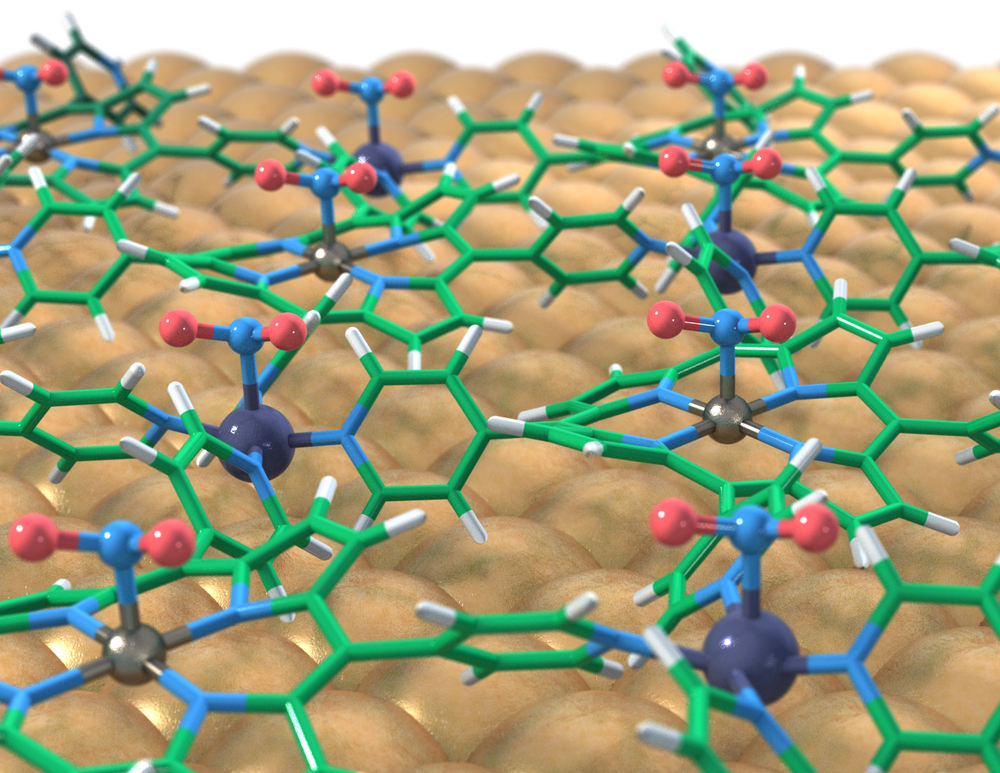2D Metal-Organic Networks
New functionalities through covalent linking
Molecular units can be confined to two dimensions on suitable templates, giving rise to novel quantum phenomena that control interfacial catalytic, magnetic, and electronic properties. Our primary focus is on self-assembled monolayers of tetrapyrrolic complexes and polycyclic aromatic hydrocarbons, among others. Additionally, recent advancements in synthesis routes have enabled us to expand our research to extended molecular networks, categorizing them into metal-organic frameworks (MOFs) or covalent organic frameworks (COFs) based on their coordination scheme.
We investigate how the molecule-surface interaction shapes the electronic, structural, and magnetic properties of the molecular layer at the atomic scale. Specifically, we delve into hybridization and charge transfer phenomena at the 2D limit and their impact on the molecular conformation, energy level alignment, and spin/oxidation state of the organic film.
Our experimental approach utilizes a multi-technique toolbox, which includes scanning probe methods such as Scanning Tunneling Microscopy, along with photoemission-based techniques like Photoemission Orbital Tomography (POT) and X-Ray Photoelectron Spectroscopy.
